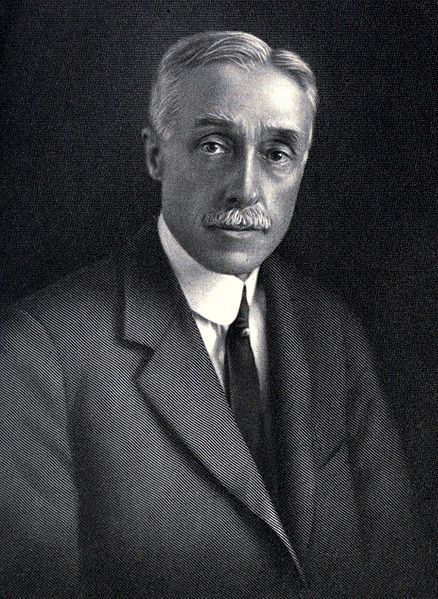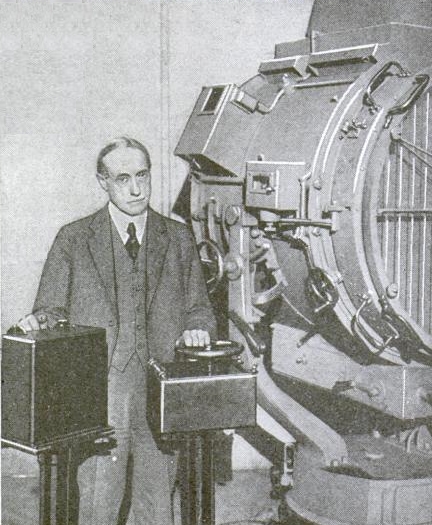<Back to Index>
- Inventor Elmer Ambrose Sperry, 1860
- Painter Al Held, 1928
- Prime Minister of the United Kingdom James Ramsay MacDonald, 1866
PAGE SPONSOR


Elmer Ambrose Sperry (October 12, 1860 – June 16, 1930) was a prolific inventor and entrepreneur, most famous as co-inventor, with Herman Anschütz-Kaempfe of the gyrocompass.
Sperry was born at Cincinnatus, New York, United States. He spent three years at the state normal school in Cortland, New York, then a year at Cornell University in 1878 and 1879, where he became interested in dynamo electricity. He moved to Chicago, Illinois, early in 1880 and, soon after founded the Sperry Electric Company. In
1900 Sperry established an electrochemical laboratory at Washington,
D.C., where he and his associate, Clifton P. Townshend, developed a
process for making pure caustic soda from salt and discovered a process
for recovering tin from scrap metal. Sperry experimented with diesel
engines and gyroscopic compasses and stabilizers for ships and aircraft. In 1910 he started the Sperry Gyroscope Company in Brooklyn, New York; his first compass was tested that same year in USS Delaware (BB-28). His compasses and stabilizers were adopted by the United States Navy and used in both world wars. In 1918 he produced a high-intensity arc lamp which was used as a searchlight by both the Army and Navy. After setting up eight companies and taking out over 400 patents, Sperry died in Brooklyn on 12 June 1930. His companies included: The companies eventually evolved into the Sperry Corporation. Sperry was also a founding member of the US Naval Consulting Board, 1915. In 1916, Sperry joined Peter Hewitt to develop the Hewitt-Sperry Automatic Airplane, one of the first successful precursors of the UAV. USS Sperry (AS-12) was named for him, as was the annual Elmer A. Sperry Award for
Advancing the Art of Transportation. The Sperry Center building on the
SUNY Cortland campus in Cortland, NY, is named after him. He was awarded the Franklin Institute's Elliott Cresson Medal in 1929.